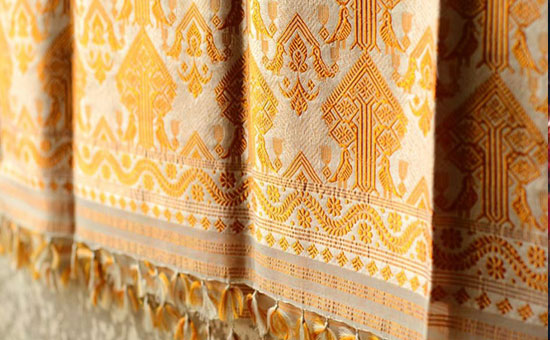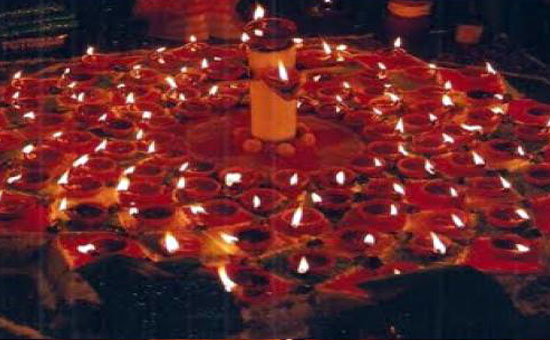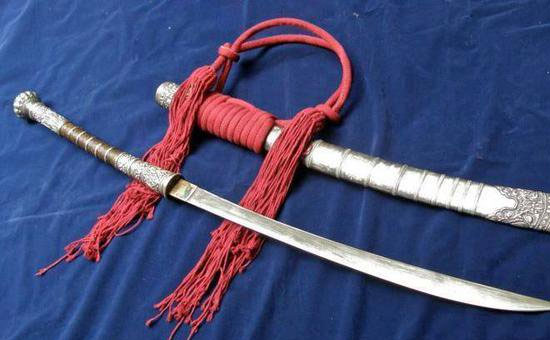Ancient India was a unique melting pot
for various communities of Asia such as Scynthians, Shungas, Bactrians, Parthians,
Kushanas, etc. All of them contributed to the uniqueness of India that we see
today. Some stayed back, completely mixing with the Indian cultural fabric;
some went away taking the vastness of Indian culture along with them. Around
the early 12th century, Northeast India experienced the advent of a
new group of people, the Tai Ahoms, who changed and moulded the history of the
region forever. The group stayed back, mesmerized by the natural beauty of the
region and its unmatched fertile alluvial soils which was enriched annually by
the mighty Brahmaputra. Tai Ahoms immensely contributed to art, culture and
religion of India.
Brief
History of AHOMS
The year was 1228 A.D. when Prince Su-Ka-pha, descendent of Shans, an ethnic Tai group of Southeast Asia decided to establish a new kingdom. The wise prince with his people crossed the conical peaks, steep slopes and deep valleys of Patkai ranges, the hills on India’s northeastern border with Burma and came down to present day Assam or what they referred to as Mung-Dun-Chun-Kham, the golden land (the magnificent kingdom of Assam). By 1251 A.D. they firmly established themselves and formed their first capital in “Che-Rai-Doi” (che=city, rai=shine, doi=hill), the shining city on the hill, which is now in Sibsagar district of Assam state. This Ahom community was thus the ruling people in the Brahmaputra valley for six hundred years.
Ahoms have made a formidable contribution in the consolidation of composite Assamese society and were virtually absorbed into the Hindu social structure. Therefore some scholars call the “Ahom” as the “Assamese Tai”. The Tai-Ahom was the earliest Tai group who migrated into Assam. This area now known as Assam, perhaps derived from the Tai word Ha-sham - the land of the Shams. Over the course of time, various Ahom groups migrated in India in successive waves. Tai Turungs are one of the last such groups who entered Assam in the early 19th century and are
scattered in areas of Golaghat, Jorhat and KarbiAnglong districts of Assam.
CHAK-LONG – THE TRADITIONAL MARRIAGE SYSTEM OF TAI AHOM
The traditional Ahom marriage system is known as Chak-long or Soklong and it is performed by all Ahomsas a social custom. It has existed since the days of Nang-hun-pha (the first AhomChak-long marriage) to the present day, and is followed continuously with pomp and grandeur. The Ahom marriage in general allows the parents and guardians to select the match for their son or daughter. After marriage the girl is expected to live in her husband’s house and perform household duties among others. With the passage of time and modernization, Ahoms families are now more flexible and greater emphasis is given upon happiness of young folks. The Ahom priestly classes, viz. Deodhai, Mohan and Bailung perform the Ahom religious ceremonies including marriage and exert authority and knowledge in Chak-long system of marriage.
The book “Chak-long” published by Duleswar Konwar on behalf of the Tai Historical and Cultural Society of Assam is an authoritative book on Chak-long. The procedures followed in ‘Chak-long’ ceremony in the early stage were their own continuous traditional systems that can be termed as customary laws. Like Saptapadi (that is, the taking of seven steps by the bridegroom and the bride jointly before the sacred fire) in Hindu marriage, there are no such rites and rituals in Chak-long ceremony that, one of the rituals, if not performed; the Chak-long marriage would be invalid.Today a three day ceremony is popular among the Tai Ahom people but in ancient times, the marriage ceremony was a long ritualistic affair of nine days. The first day is called ‘Joron-diya’, then ‘Murot-teldiya’ and ‘Chak-long’ in the last day. Originally there were no god or goddesses in Chak-long ceremony and the married couple prayed to almighty, elders and ancestors. After the Sankritization of the community, gods and goddesses like Lang-kuri, Leng-don, La-reng, Jan-sai-hung, Ja-singpha were introduced by Ahom pundits.
Typically the first day starts with the bridegroom’s family gifting wedding apparel (minimum three or maximum seven sets) and ornaments to the bride, along with other necessary articles. Two earthen pots filled with rice, decorated with cotton yarn and wrapped around in beautiful napkins, with a fresh mango-twig having five leaves planted in each of them and four packets of paste of black pulse, named ‘mati-mah’ and turmeric are gifted to the bride for her bathing ritual. The Ahoms are excellent weavers and thus they make sure that the wedding dress of the bride is exquisite and elegant. The bride like a princess sports a breathtaking hairdo and dons the traditional elegant mekhela-chador weaved of muga silk combined with equally beautiful keru and thuria on the ears. Assamese traditional ornaments like biri, dugdugi and golpota on the neck, gaamkharu, bracelet and bangles on the wrist, and gold rings on fingers. The groom on the other hand is handsomely dressed with a turban on his head, a white silk shirt, churia on the waist and footwear- which makes him look like a Tai Ahom king.
 Intricate design weaved in Mekhla chador.
Intricate design weaved in Mekhla chador.
One
of the most unique and striking
feature in the Ahom Chak-long is the promise made by the bridegroom before the
bride at the altar, Maral- a vast and beautiful Rangoli decorated with 101
earthen lamps, in presence of the mo-lung and his associates, and the elders
present witnessing the rituals.
 Glimpse from Chak-long marriage.
Glimpse from Chak-long marriage.
Let’s understand the pattern and arrangement of Maral which is the highlight of the wedding day. Basically in this pattern, 16
small earthen lamps are arranged in 6 concentric circles and 4 medium earthen
lamps in the innermost circle. In the centre we have a large earthen lamp, thus
making it 101 lamps. Another interesting aspect of Ahom marriage is Hengdang
which is a single edged sword with a long handle used by the Tai people. The
bride picks up the Hengdang kept on a
platter and offers it to her husband, addressing him to subdue his enemies,
look after his family and do well for the welfare of the country along with kavac-kapor which is prepared within a single night demonstrating the weaving prowess of the bride.
 Unique arrangement of maral used instead of Homa.
Unique arrangement of maral used instead of Homa.
 Hengdang offered by bride to the groom.
Hengdang offered by bride to the groom.
So let’s break down the different stages of Chak-long marriages for a clear understanding in brief. Each stage has its own meaning and relevance. The stages are as follows:
- Selection of the bride and groom
- Horoscopes of the bride and the groom examined (Ban-seng method)
- Betrothal (ring ceremony)
- Fixing the day of marriage and sending out invites.
- Preparation of rabha-pandals, welcome-gates etc
- Oblation to the dead ancestors up to nine degree and feast on the occasion
- Rik-khwan and Deo ban
- Panitola - collection of water from the flowing river or pond
- Aptang - Nupital bath of the bride and the bridegroom
- Gsthiyankhunda followed by Marriage procession of the groom
- Sampradana or Kanyadana followed by exchange of garlands
- Prayer to madala, dharma and the gods and deities
- Offering hengdan and kavac-kapor with promises exchange between husband and wife
- Narration of ancestral history, bride and advice to the newly married couple
- Exchange of gold rings and silver box and knife followed by playing dice and cowrie
- Reception of the bride at the new house
- The grand concluding feast culminating into Ghar-utha and athmangala
It is extremely delightful to see that the evil named ‘dowry’ is unheard among Ahoms and whatever is presented to the girl at the time of marriage is regarded as joutuk’a with no customary bindings. The solemnization of the Chak-long binds the couple to maintain a chaste life which is one of the most important characteristics of married life and to run a social system.
The
marriage system is unique and one of its kind. The merriness is quite lively
and represents the joyous moments of the immediate two families and the
extended society. Next time if you get a chance to be a part of Chak-long
marriage, I will suggest you to not miss it. The vibrancy will capture your
sheer interest and allow you to take back some beautiful memories.
About the Author:
Mitrajit
Deb is an environmentalist & nature educator by heart and by profession. He
is a trained wildlife biologist and works as an Ecologist in Aaranyak, a
research organization in Northeast India. His main interest lies in studying
the natural history of animals and researching Indian history. He is fascinated
by the culture and customs of communities of India especially the tribes.
Readings and References:
1.Chetia, S. N. (2001). The Ahom marriage system with emphasis on Chak-long. PhD Thesis.
2.Duangthip, R. (2012).Tai-Ahom and standard Thai: a descriptive-comparative study. PhD Thesis.
3.DuleswarKonwar (1972). Chak-long. Published on behalf of Tai Historical and Cultural Society of Assam.
4.Rituals of an Ahom Marriage that make real classy
5.Chaklang Traditional Ahom Marriage
6.TheAhom tribes and their marriage